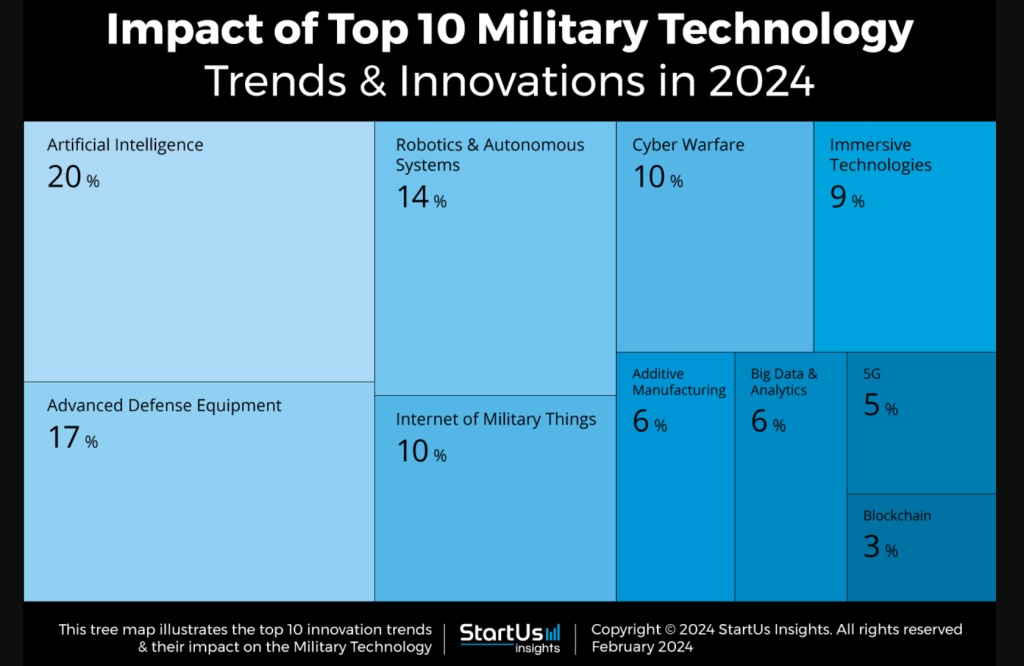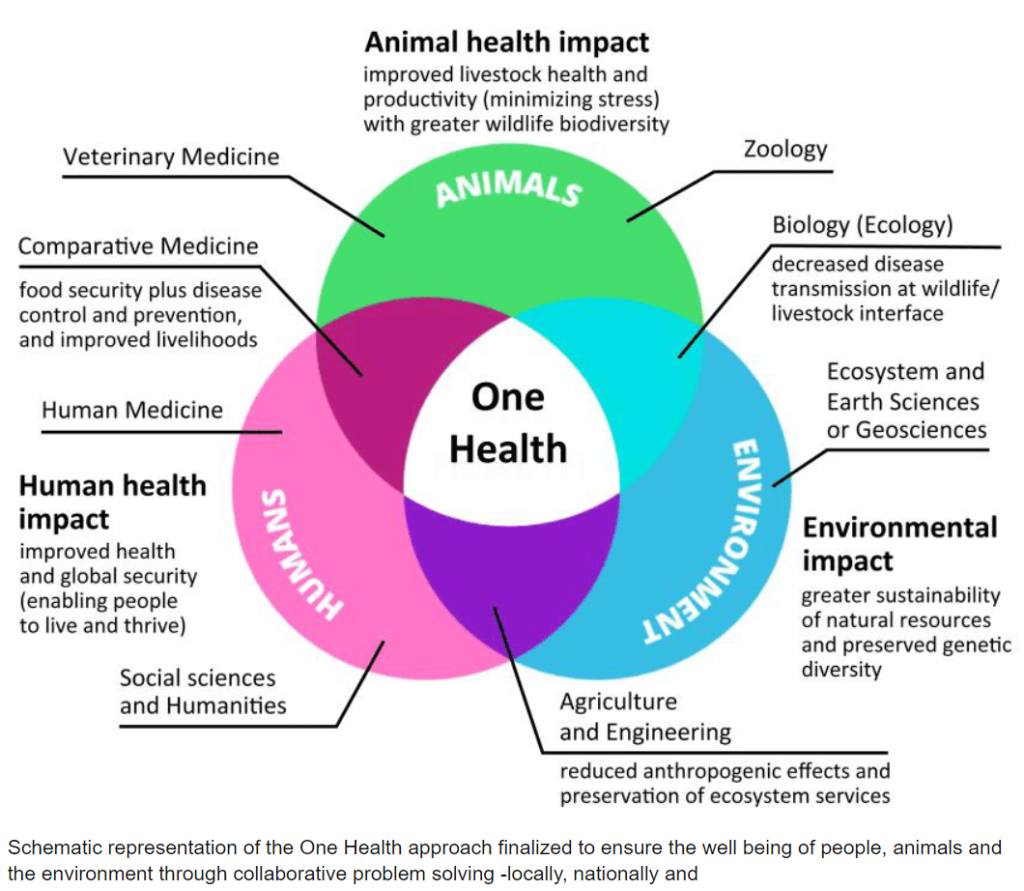CONTENTS
- Technology Absorption in the Indian Army
- The Advent of a Holistic Approach to ‘One Health’
Technology Absorption in the Indian Army
Context:
The Indian Army has designated 2024 as the ‘Year of Technology Absorption’, highlighting its commitment to integrating technology to stay ahead of adversaries amidst evolving warfare dynamics. This initiative aligns with the overarching goal of self-reliance (Atmanirbharta).
Relevance:
GS-2- Government Policies and Interventions
GS3-
- Indigenization of Technology
- Defence Technology
Mains Question:
The Indian military is moving in the right direction, but the challenge lies in sustaining technology absorption with anuanced understanding of the requirements. Analyse. (10 Marks, 150 Words).
More on the Technology Absorption:
- Emphasis will be on adopting disruptive technologies (DT) such as artificial intelligence, autonomous systems like drones, sensors, robotics, space tech, and hypersonic weapons.
- Notably, nations like the United States and China have made significant strides in DTs, shaping future strategic competitions where technological absorption will determine success.
- In military terms, absorption entails acquiring, adapting, and integrating technologies into existing structures known as legacy systems. These encompass various intricacies often not readily apparent to outsiders.

Misconceptions Surrounding the Integration of Disruptive Technologies (DTs):
Several aspects as outlined below offer a nuanced understanding of the matter:
- Firstly, traditional weapon platforms and tactics are expected to endure alongside the introduction of DTs. The focus lies more on finding practical applications for these new advancements rather than solely on their discovery.
- Integration, as a part of absorption, where new DTs complement existing platforms, is crucial. Simply discarding current systems to replace them with new ones may not necessarily be the most effective approach moving forward.
- Despite the potential for new technologies to significantly reshape the nature of future conflicts, it’s crucial not to become complacent merely due to their acquisition.
- The manner in which military organizations employ these technologies will be pivotal in understanding their impact on the battlefield.
- Some analysts advocating for a technological revolution in warfare argue that modern battlefields have become more lethal.
- However, it is noted that the actual lethality witnessed in recent conflicts, such as the Russia-Ukraine and Armenia-Azerbaijan (Nagorno-Karabakh) wars, isn’t vastly different from that of earlier eras.
- This underscores the fact that technological advancements alone won’t determine the outcome of conflicts; they are just one aspect influencing results.
- Furthermore, as observed in the ongoing Russia-Ukraine conflict, the initial advantages Ukraine had weren’t sustained as the war progressed. One contributing factor to Russia’s advantage on the battlefield now is its utilization of traditional military strategies.
- Elements like reinforcing conventional defense lines and possessing a robust military-industrial base ultimately hold more significance.
- The Indian military’s approach of simultaneously focusing on disruptive technologies and enhancing indigenous defense manufacturing capabilities certainly sets a promising path forward.
Adapting to New Conditions is Crucial:
- Adjusting to new circumstances is paramount. In warfare, technical countermeasures swiftly neutralize the effectiveness of newly deployed technology-enabled weapons by adversaries.
- However, the most crucial adaptations often pertain not to technology but to operational and tactical aspects — essentially, how a military conducts operations at various levels. These adaptations entail changes in how armies utilize their available tools.
- Over a century ago, military forces devised tactics to minimize their vulnerability to enemy fire by leveraging dispersion, cover, and concealment. Such strategies hold even greater significance in today’s era.
- In contemporary battle scenarios, weapon systems like tanks must evolve to enhance their survivability. This necessitates tactical adjustments and a heightened integration of diverse capabilities.
- Given the abundance of sensors on the battlefield, concealment has become nearly impossible. For instance, tanks will need to operate in widely dispersed formations, accompanied by electronic warfare units tasked with detecting and disrupting enemy aerial platforms.
- Similarly, infantry units operating in dispersed formations will require exceptional junior leadership to effectively navigate compartmentalized and technologically advanced battles.
Way Forward:
- Rather than replacing traditional platforms with exclusively digital solutions, future planning should revolve around integrating technology and its capabilities.
- This process begins by recognizing vulnerabilities and sensitivities, as well as identifying the gap between them.
- A comprehensive grasp of the latest technologies, their potentials, and their contextual applications is essential.
- The process of absorption must be evident at unit levels rather than solely controlled from higher echelons. Empowering units to leverage technology at the forefront is crucial for genuine transformation.
- Moreover, technology absorption will encompass various macro-level aspects, including organizational restructuring, human resource management, the cultivation of specialists at decentralized execution levels, civil-military integration, implementing structures and policies to ensure data integrity, and developing procurement policies suitable for disruptive technologies.
Conclusion:
While the Indian military is making strides in the desired direction, sustaining this momentum requires a nuanced understanding of the applicable requirements. In this regard, there are valuable lessons to be learned from recent and ongoing conflicts that should not be overlooked.
The Advent of a Holistic Approach to ‘One Health’
Context:
The intricate relationship among humans, animals, and the environment has become increasingly apparent in light of pandemics like COVID-19. These outbreaks don’t just affect human populations; they also impact livestock, as evidenced by the spread of diseases like lumpy skin disease across countries.
Relevance:
GS2-
- Health
- Government Policies and Interventions
Mains Question:
The One Health approach is not a static endpoint but rather an ongoing journey of refinement and adaptation. Comment. (15 Marks, 250 Words).

National One Health Mission:
- The recent establishment of the ‘National One Health Mission’ by the cabinet represents a significant milestone. This initiative was endorsed by the Prime Minister’s Science, Technology, and Innovation Advisory Council (PM-STIAC) in July 2022.
- Since then, 13 Ministries and Departments, along with science funding agencies such as the Department of Science and Technology, the Department of Biotechnology (DBT), the Council of Scientific and Industrial Research (CSIR), the Department of Pharmaceuticals, and AYUSH (Ayurveda, Yoga and Naturopathy, Unani, Siddha, and Homeopathy), as well as the Ministries of Health, Animal Husbandry, Environment, and Defence, have collaborated to shape the mission.
- This collaborative effort represents one of the most comprehensive approaches to one health and pandemic preparedness globally.
- The leadership of these Ministries reached a consensus on establishing a National Institute for One Health.
- Located in Nagpur, this institute will serve as the focal point for coordinating national activities and as the nodal agency for international collaboration in the realm of one health. The Indian Prime Minister laid the foundation stone for this institute on December 11, 2022.
- The objectives of the ‘National One Health Mission’ encompass developing strategies for integrated disease surveillance, coordinated outbreak response, collaborative research and development (R&D), and facilitating seamless information sharing to enhance control measures for both routine diseases and those with pandemic potential.
Significance of the Initiative:
- While diseases affecting humans, like COVID-19, are widely recognized, illnesses impacting animals, such as foot and mouth disease or lumpy skin disease, can significantly disrupt productivity and trade. Additionally, diseases like canine distemper affect wildlife populations and their conservation efforts.
- Only through a concerted and coordinated approach can we effectively prepare for such diseases, as well as emerging threats that could spark the next pandemic, such as avian influenza or Nipah virus. Pandemic readiness requires a robust focus on intensive research and development (R&D).
- Targeted R&D efforts are essential to enhance preparedness against emerging diseases by creating essential tools like vaccines, therapeutics, and diagnostics, which are crucial not only for India but also for the global community.
- In this endeavor, various participating departments such as the Department of Biotechnology (DBT), the Council of Scientific and Industrial Research (CSIR), the Indian Council of Medical Research, the Indian Council of Agricultural Research, and the Department of Pharmaceuticals will play pivotal roles.
- However, it’s not just government entities but also academic institutions and the private sector that will be crucial stakeholders in realizing this vision.
- Effective collaboration among these stakeholders can only be achieved through close coordination between the central government and state governments.
- Collaborating with states will not only facilitate the adoption of this approach at the grassroots level but will also provide valuable insights during implementation, leading to the evolution of an effective strategy.
- It’s worth noting that the One Health approach is not a static endpoint but rather an ongoing journey of refinement and adaptation.
A Network of Laboratories:
- As part of the mission, a national network of high-risk pathogen laboratories (Biosafety level or BSL 3 and BSL 4) has been established.
- This initiative aims to consolidate laboratories managed by various departments, enhancing the coordinated response to disease outbreaks across human, animal, and environmental domains.
- By pooling resources and infrastructure, this network enables more efficient utilization of costly but essential facilities, facilitating a more integrated approach to combating diseases like Nipah virus, which involve multiple species such as bats, pigs, and humans.
- Furthermore, India needs to strengthen its epidemiological and data analytics capabilities. Efforts under the mission focus on leveraging artificial intelligence (AI), machine learning, and disease modeling to enhance epidemiological capacity across sectors.
- Innovative approaches like genomic surveillance from wastewater, which showed promise during the COVID-19 pandemic, will be expanded to other sentinel sites where animals (both livestock and wildlife) congregate.
- This broader application aims to mainstream these approaches into routine surveillance across human, animal, and environmental sectors.
A global Issue:
- ‘One Health’ is a global concern that gained significant attention during India’s presidency of the G-20.
- This approach was widely supported by all member nations, emphasizing collaboration in key areas such as enhancing surveillance capacity, analytical capabilities, and establishing an international network of ‘One Health’ institutes.
Conclusion:
‘One Health’ extends beyond diseases to encompass broader issues like antimicrobial resistance, food safety, plant diseases, and the effects of climate change on these domains. Addressing intersectoral topics like ‘One Health’ requires the active involvement of not only diverse governmental agencies but also non-governmental organizations, academia, the private sector, and citizens. By adopting a collaborative and actionable framework, we can progress toward the overarching goals of ‘One Earth, One Health‘ and ‘Health for All’.





